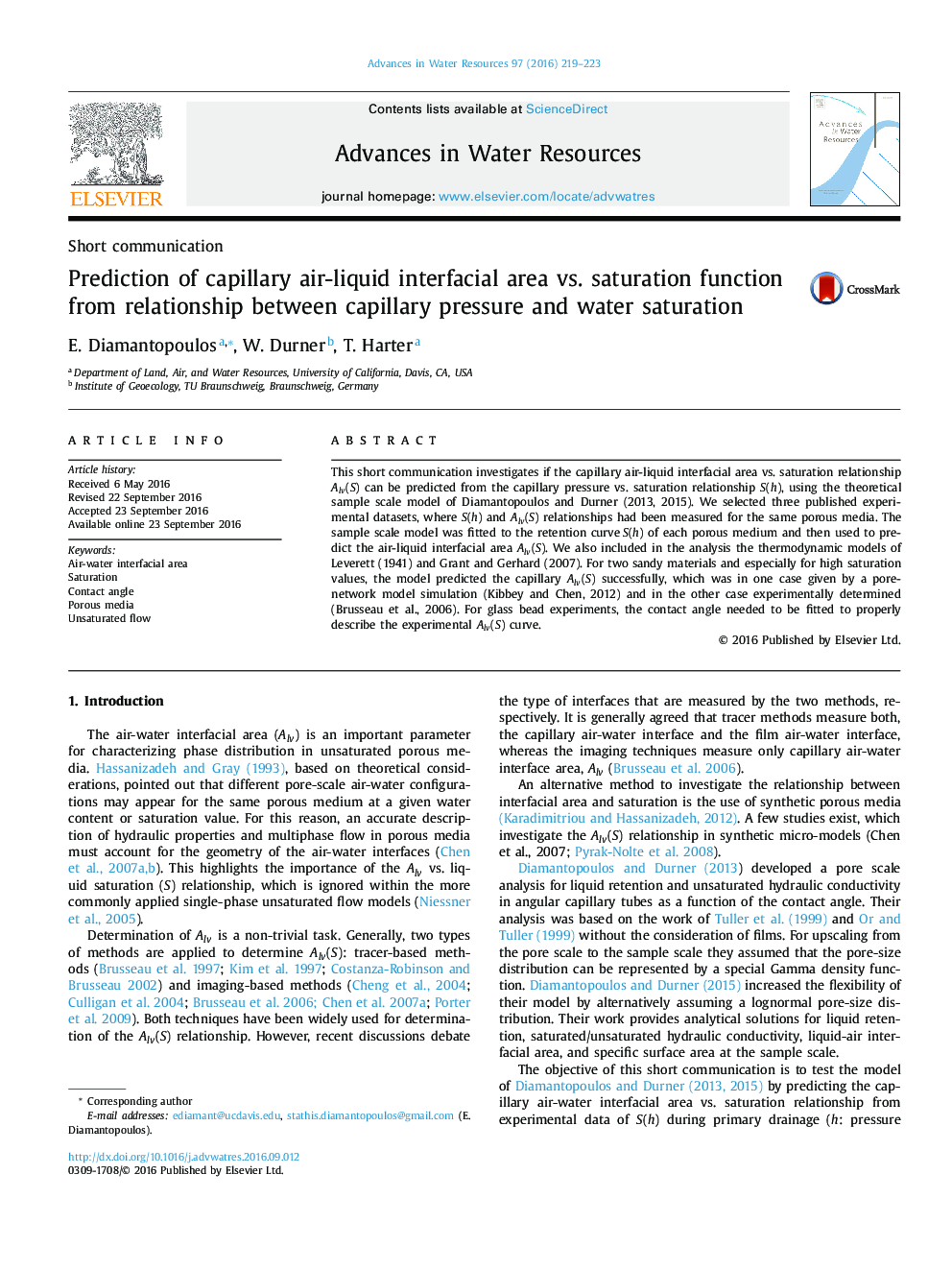| Article ID | Journal | Published Year | Pages | File Type |
|---|---|---|---|---|
| 6380589 | Advances in Water Resources | 2016 | 5 Pages |
Abstract
This short communication investigates if the capillary air-liquid interfacial area vs. saturation relationship Alv(S) can be predicted from the capillary pressure vs. saturation relationship S(h), using the theoretical sample scale model of Diamantopoulos and Durner (2013, 2015). We selected three published experimental datasets, where S(h) and Alv(S) relationships had been measured for the same porous media. The sample scale model was fitted to the retention curveâ
S(h) of each porous medium and then used to predict the air-liquid interfacial area Alv(S). We also included in the analysis the thermodynamic models of Leverett (1941) and Grant and Gerhard (2007). For two sandy materials and especially for high saturation values, the model predicted the capillary Alv(S) successfully, which was in one case given by a pore-network model simulation (Kibbey and Chen, 2012) and in the other case experimentally determined (Brusseau et al., 2006). For glass bead experiments, the contact angle needed to be fitted to properly describe the experimental Alv(S) curve.
Related Topics
Physical Sciences and Engineering
Earth and Planetary Sciences
Earth-Surface Processes
Authors
E. Diamantopoulos, W. Durner, T. Harter,
